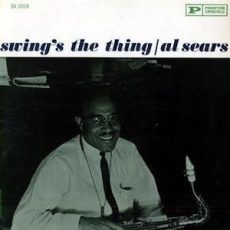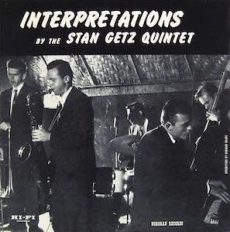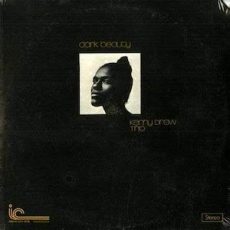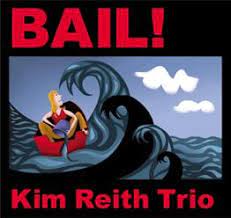
Three Wishes
Calvin Newborn acknowledged Nica’s question of three wishes by speaking with these three:
-
- “Well, the first would be a new instrument ~ a new guitar.”
- “I want to have an estate, some property. You know.”
- “A beautiful woman.”
*Excerpt from Three Wishes: An Intimate Look at Jazz Greats ~ Compiled and Photographed by Pannonica de Koenigswarter
More Posts: baroness,guitar,history,instrumental,jazz,music,pannonica,three,wishes

Daily Dose Of Jazz…
Albert Omega Sears was born February 21, 1910 in Macomb, Illinois. His first major gig came in 1928 when he replaced Johnny Hodges in Chick Webb’s ensemble. The Thirties had him first playing with Elmer Snowden, then led his own groups between 1933 and 1941.
In the early 1940s he joined Andy Kirk and Lionel Hampton before he became a member of Duke Ellington’s Orchestra in 1944, replacing Ben Webster. He remained with Ellington until 1949, when first Jimmy Forrest and then Paul Gonsalves took over his chair. He played with Johnny Hodges in 1951–52 and recorded the tune Castle Rock with him. The tune became a hit but unfortunately was released under Hodges’s name.
Sears was in Alan Freed’s band when Freed did live shows, being introduced as “Big Al Sears”. He played as a studio musician on R&B albums in the 1950s and recorded two albums for Swingville in 1960. He also owned several record labels, including Arock, Serock, and Gator.
Tenor saxophonist and bandleader Al Sears, who recorded four albums as a leader, transitioned on March 23, 1990 in St. Albans, New York at the age of 80.
More Posts: bandleader,history,instrumental,jazz,music,saxophone

Daily Dose Of Jazz…
Frank Isola was born on February 20, 1925 in Detroit, Michigan and was heavily influenced by Gene Krupa. He played in the U.S. military during World War II and then studied and performed in California with Bobby Sherwood and Earle Spencer.
Moving to New York City he played with Johnny Bothwell and Elliot Lawrence in 1947. Following this, in the Fifties Frank played with Stan Getz and Gerry Mulligan, as well as with Mose Allison, Eddie Bert, Bob Brookmeyer, Jimmy Raney, Johnny Williams and Tony Fruscella.
By the late 1950s Isola returned to Detroit and kept working periodically with local bands or in jam sessions but well out of the spotlight. He was active in the Cass Corridor area of Detroit in the 1970s playing jazz standards with pianist Bobby McDonald and others at Cobb’s Corner Bar.
He worked as a drummer briefly at Captain Hornblower’s in Key West, Florida in the late 1980s with pianist Johnny Williams. By the early Nineties, he moved back north and was playing weekly at Tom’s Steamer’s Bar in Grosse Pointe, Michigan. In 1994 and 1995 Isola played at The Windsor Jazz Festival in Ontario, Canada backing Franz Jackson and Marcus Belgrave. The 1994 concert was released on Parkwood Records as Live at Windsor Jazz Festival III with Jackson and Belgrave as co-leaders.
He recorded fourteen albums between 1954 and 1981 with Getz, Mulligan, Mose Allison, Bob Brookmeyer, Dick Garcia, Franz Jackson, Charlie Parker and Bob Szajner. Drummer Frank Isola, who never led a recording session, transitioned on December 12, 2004.
More Posts: drums,history,instrumental,jazz,music

Requisites
Dark Beauty ~ Kenny Drew Trio | By Eddie Carter
It had been a long while since I heard this morning’s album by The Kenny Drew Trio. I put the record on my turntable and listened to it while reading a few nights ago, which inspired this week’s discussion. Dark Beauty (SteepleChase Records SCS-1016) is the first of two trio dates featuring Kenny Drew on piano, Niels-Henning Ørsted Pedersen on bass, and Albert “Tootie” Heath on drums. Both were recorded in the same sessions over two days in May, and this release hit the stores in 1974. The companion album, If You Could See Me Now, came out a year later. My copy is the 1976 SteepleChase Series US Stereo reissue (Inner City Records IC 2016).
Side One leads off with Run Away by Danish flutist and saxophonist Per Carsten. The trio begins the introduction and melody, then Kenny starts things with a festive opening solo. Niels-Henning makes a stunning impression on the following reading, and Albert has a brief comment leading to the group’s rousing closing chorus. The title tune, Dark Beauty by Kenny Drew, is one of his most beautiful compositions. Drew and Pedersen open the ballad with gentle cascades on the piano and a gorgeous bowed solo in the introduction, central theme, and closing chorus, which weaves a haunting spell. In between, the pianist gives an intimately tender interpretation matched by the softness of the bassist and drummer’s accompaniment.
The group’s first of four jazz standards is Summer Nights by Harry Warren and Al Dubin. It opens with an elegantly constructed introduction by Niels-Henning; next, Kenny and Albert enter to complete the nostalgically dreamy melody. Drew caresses the song’s lyrics with sensuous beauty in his playing of the only statement into the ending theme and gentle climax. All Blues by Miles Davis closes the first side. Drew and the rhythm section get things underway with an energetically charged melody, and the opening statement by Kenny is hotter than fireworks in July. The closing interpretation allows Heath’s drums a brisk workout while Pedersen’s bass keeps the beat flowing ahead of the song’s lively conclusion.
Side Two starts with It Could Happen To You by Jimmy Van Heusen and Johnny Burke. Kenny introduces the jazz standard slowly and then moves up the tempo to a brisk melody and first interpretation. Albert engages in a zesty exchange with the leader preceding the theme’s reprise and exit. Love Letters by Victor Young and Edward Heyman is up next. This song is featured in the 1945 film of the same name, and the ensemble’s rendition begins with a gorgeous introduction by Niels-Henning and Kenny. The pianist has the first say and turns the tempo up for the opening statement. Pedersen takes his first opportunity to solo with an extensive presentation that flows into the trio’s closing chorus and finish.
Silk Bossa comes from the pen of Danish pianist Thomas Clausen, and Niels-Henning sets the mood with a solo introduction that grows into a pleasant melody by Kenny. The rhythm section lays a lush foundation for the pianist to present a delicately expressed statement. Pedersen ends the way he began with an unaccompanied bowed solo which ends softly. The album ends with Blues Inn by Kenny Drew, which starts with the trio swinging at an easy beat during the melody, giving way to Drew’s charming opening statement. Pedersen is equally adept in the dazzling display that follows; then, Heath carries on a concise conversation with Drew in the finale ahead of the theme’s reprise and fade out.
Nils Winther produced the initial session, and Freddy Hansson was the recording engineer. The music on Dark Beauty is as lovely as the young woman in the front cover photo, Kenny’s daughter, Sabrina. This reissue’s sound quality is excellent, with an outstanding soundstage that transports the trio to the sweet spot in your listening room with superb definition. If you are a fan of Kenny Drew and enjoy jazz piano trios, I invite you to consider Dark Beauty by The Kenny Drew Trio on your next vinyl shopping trip. It’s an excellent trio album that is perfect for late-night listening and highly recommended for a spot in your library!
~ If You Could See Me Now (SteepleChase Records SCS-1034) – Source: Discogs.com ~ All Blues, It Could Happen To You, Summer Nights – Source: JazzStandards.com ~ Love Letters – Source: Wikipedia.org © 2023 by Edward Thomas Carter
More Posts: choice,classic,collectible,collector,history,instrumental,jazz,music,piano

Daily Dose Of Jazz…
Kim Reith was born on February 19, 1954 in San Diego, California. As a child, she was exposed to a large jazz, blues, folk, opera, world and ethnomusicology recording collection belonging to her music-loving mother.
In 1979 Reith made her entrée into music as a backup vocalist in an all-women’s blues and gospel chorale for San Francisco, California blues pianist, singer/songwriter and recording artist Gwen Avery. She began her instrumental career as a guitarist, singer and songwriter for an experimental SF punk-rock trio, the Well Babies. In 1985 she began studying guitar privately with San Francisco jazz guitarists Marlena Teich and Duncan James and with the Los Angeles/San Diego jazz guitarist Art Johnson, and spent many years in independent study.
1987 saw her beginning to focus exclusively on jazz studies, eventually getting her feet wet with various small San Francisco jazz bands. In 1992 she supported herself by playing solo jazz guitar on the streets of Paris, France returning to San Diego in 1993. That year, she joined acclaimed avant-garde Canadian saxophonist Maury Coles for duo explorations and performances. At the opposite end of the jazz spectrum, Kim also performed with the UCSD Big Band under Jimmie Cheatham’s direction. She formed both the duo Groove Yard and the Kim Reith Trio in 1994, performing extensively with both groups throughout San Diego between 1994 and 2000.
Reith has been composing jazz works for small and large ensembles since 1993, formally studying jazz theory, composing and arranging under Rick Helzer at SDSU. Recording her debut album BAIL! In late 1999 she documented her compositions and her ensemble work with San Diego bassist Bruce Grafrath. She has gone on to collaborate with Bronx-born Swiss resident Edmund J. Wood, on a series of experimental open improvisations, featuring Reith on hollow-body electric guitar and Wood on fretless bass and implied-time drum loops.
Guitarist Kim Reith currently composes and performs in Los Angeles, California. Unfortunately she has not posted any of her music on line.
More Posts: bandleader,composer,guitar,history,instrumental,jazz,music



